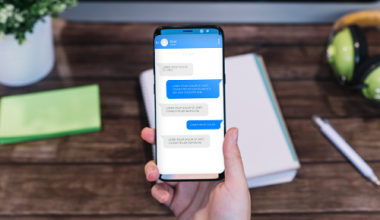As Amazon, Apple, Google – and Comcast – Compete
The race is on among giant tech companies to position as the smart home hub, unifying the internet of things (IoT) devices in the home with an AI-powered central control. The devices include voice activators, home appliances and home controls embedded with electronics and software and able to operate within the Internet infrastructure.
Amazon, Apple and Google are in the race; Samsung is showing interest. Here is an account of where it stands today.
Amazon in September announced multiple smart devices including an Alexa-powered digital home hub, a smaller and cheaper Echo speaker and a new mini-Echo with a screen, called Spot. The hardware is a means to an end for Amazon, which is offering new ways for customers to shop and engage with movies and books through its Amazon Prime membership service.
Amazon seeks to expand from its success with the Alexa voice-activated assistant imbued with AI as Apple and Google begin to market more devices with their own voice-based services, Apple’s Siri and Google Assistant. Apple was scheduled to release its HomePod speaker in December, and Google was expected to debut a smaller Home speaker and upgraded Pixel smartphones in October.
Amazon’s new smart home device, called the Echo Plus, improves the sound from the preceding Echo speaker and is priced at $150, down from $180. It also has a built-in hub that lets users more easily connect and control other accessories including lights, thermostats, and locks.
The new, smaller Echo also has better sound and an improved ability to hear users, according to Dave Limp, who runs Amazon’s Alexa and Echo lines, reported in Bloomberg Technology. The $99 speaker has a dedicated woofer and tweeter for sharper music playback and new microphones to let the device understand users at a greater distance, Limp said.
The Echo Spot is a mini speaker with a 2.5-inch color screen, which acts like a miniature version of the Echo Show announced earlier in 2017. It can show information such as the time, weather, news, web videos and has a built-in video camera for video calling over Alexa. The device, priced at $130, also can serve as a video intercom.
Also in September, Amazon released an improved Fire TV set-top box supporting higher-resolution 4K video at a faster frame rate the the previous versions, matching the capabilities of Apple’s recently updated model. Amazon’s new box is smaller than the current device and can plug into the back of a TV via its HDMI port. The product continues to integrate with Alexa, allowing users to shout commands into their remote control or to their Echo speakers. Netflix and Hulu will begin to support Alexa voice control within their respective Fire TV applications, Amazon said.
Amazon also announced a speaker phone accessory called Echo Connect, that plugs into existing home landline telephone jacks. The other end of the $35 device connects to an Echo speaker so people can use their voice to make calls and chat hands-free. The device will be released in the U.S. in the fourth quarter and in the U.K. next year.
The September announcements follow a procession of new Amazon products in 2017, as Bloomberg reported. The retail giant launched the Echo Show, a version of its speaker with a tablet-sized touchscreen; the Echo Look device, with a camera for giving users wardrobe advice; cheaper tablets; and a third-party television set with built-in Fire TV streaming capability.
It’s too early to say how the Amazon and Google fight will end, but both companies are vying for control of the smart home, as The Verge reported after the September Amazon announcements. Google has its hold over online search, YouTube, Google Photos, and Android as leverage; and Amazon has its dominance with online retail and Prime Video. Apple is showing interest with HomeKit and HomePod, and Samsung is just getting started with Bixby. Amazon wants Alexa everywhere, just like Microsoft wanted Windows everywhere, but it’s not going to get there without some battles along the way. The war is now well and truly on, and Amazon is clearly winning, as seen by The Verge.
A survey of US consumers conducted by investment firm Cowen & Co. in August found that 13.5% of US consumers had an Amazon Echo, compared to 5.9% of consumers with Google Home. Google ramped up its effort with announcements in early October that included Google Home Mini, wrapped in fabric and the size of a donut, priced at $49. It’s featured on TV ads running in October.
An estimated 60.5 million Americans are expected to use voice-controlled speakers and virtual personal assistants at least once a month this year. The most common use for both Amazon Echo and Google Home is listening to music, followed by requesting information, according to Cowen’s consumer survey. Google Home is slightly more popular than the Echo for ordering food and adjusting other internet-connected home settings, such as thermostats.
Apple announced its HomePod in June at its Worldwide Developers Conference in San Jose, Calif. The new speaker features voice control and spatial awareness to adapt the sound to different rooms. “It will reinvent home audio,” Apple CEO Tim Cook told the crowd.
The price was announced to be $349, shipping in December in the US, UK and Australia. The play is to compete initially on speaker quality. Sharing a few technical details, Apple said HomePod uses seven beam-forming tweeters and an upward-facing woofer for audio playback, and an array of six microphones for voice control. HomePod uses Apple’s A8 chip, also used for its mobile devices. A multicolor LED light on top of HomePod will signal when Siri is listening.
Comcast Joins the Smart Home Device Competition
Comcast is joining Apple, Google and Amazon in the race to convince customers that they need Internet-connected smart home devices like thermostats, lights and garage door openers.
Comcast began a new program in October called Works with Xfinity Home, designed to give customers the option of controlling all of their smart home devices using a single mobile app and password. As it is, many smart home devices require separate apps and log-ins, creating a headache for consumers, as reported in SFGate from the San Francisco Chronicle.
Comcast’s first four partnerships for the Works with Xfinity Home program include Google’s Nest Learning Thermostat and a smart door lock made by San Francisco startup August.
“We want to make the connected home something that is approachable,” Daniel Herscovici, senior vice president and general manager of Xfinity Home told SFGate. “And to do so, we want to make it easy to make devices talk to each other, and to make installation, setup and support easy.”
Comcast’s entry could be formidable given its reach with cable TV and high-speed Internet subscribers. Comcast can also flex its marketing power through its media conglomerate, NBCUniversal.
“Over the next 48 months, we believe home automation as a stand-alone experience will become a large part of the customer experience,” Herscovici said. “We’re setting us up to be well positioned there.”
To earn a “Works with Xfinity Home” label, Herscovici said, smart home devices must pass a certification program run by Comcast engineers.
Apple’s “Works with Apple HomeKit” and Google’s “Works with Nest” labels are also set up to verify for customers whether the third-party smart home device is compatible with their software platform of choice.
Comcast is tying home automation into its existing Xfinity Home security service, which has more than 500,000 subscribers. That service starts at $40 a month and includes 24-hour professional security monitoring, an alarm system and video cameras.
Comcast is also now marketing a $20-per-month automation-only service, called Xfinity Home Control, that includes some security devices like motion detectors and a non-Nest wirelessly controlled thermostat. Both services include a free help line for troubleshooting problems.
Samsung Unveils SmartThings Cloud
At Samsung made a series of announcements at its developer conference in October that drew over 5,000 attendees. DJ Koh, president of the Mobile Communications Business for Samsung Electronics, struck a theme of “Connected Thinking” beyond the smartphone, as reported in Forbes. Samsung announced an IoT platform called SmartThings Cloud, providing developers on cloud API that can be used across all SmartThing-compatible products for greater connectivity.
Samsung also announced Bixby 2.0, an improved version of its voice and vision interface, bringing voice functionality to smart TVs and refrigerators, for example. A private beta of an SDK for developers to create new voice and vision-enabled experiences was released.
It makes sense that Samsung is attempting to pull together the connection and management of devices it has installed in homes, under the SmartThing Cloud umbrella. Consumers reluctant to spring for new hardware they already have, may look at Samsung’s Project Ambience which aims to make the Samsung devices smarter by adding a dongle that adds Samsung’s Bixby voice assistant.
Wal-Mart to Greet Shoppers with Smart Towers
Fighting the loss of in-store customers to online shopping, Wal-Mart is innovating with some new devices in its stores. Lauren Desegur, VP of customer experience engineering at WalmartLabs, told Forbes in an August piece, “We’re essentially creating a bridge where we are enhancing the shopping experience through machine learning. We want to make sure there is a seamless experience between what customers do online and what they do in our stores.”
With over 11,000 brick-and-mortar stores, Wal-Mart is in a good position to experiment. They also run a tech incubator called Store No. 8 in Silicon Valley, to “incubate, invest in, and work with other startups, venture capitalists and academics to develop its own proprietary robotics, virtual and augmented reality, machine learning and artificial intelligence technology.”
New in-store devices recently tried including Pick-Up Towers, 16 x 8 -foot self-service kiosks located at the store entrance, for retrieving online orders. Customs scan a barcode on their online receipt and the products they purchased come down on a conveyor belt, very quickly. Another innovation is Scan and Go Shopping, where pharmacy customer for example would use the Walmart app for some parts of the checkout process, to making getting in and out of the store faster. Whether Wal-Mart aims to enable customers to bypass the current checkout process entirely, along the lines of the Amazon Go concept store, remains to be seen.
More will be written in coming weeks and months about consumer resistance to the smart home device market, for many reasons including security and privacy. For now, the market participation by major players and their marketing efforts are ramping up. Let’s see what happens with the rate of consumer adoption and experiences in the home as the smart devices become more widely installed and capable.
Written and compiled by John P. Desmond, AI Trends Editor
Source: AI Trends






